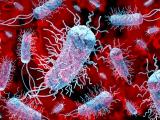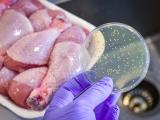Nov 5, 2007 (CIDRAP News) In the wake of evidence that Canadian beef contributed to recent Escherichia coli cases in the United States, the US Department of Agriculture (USDA) has announced plans to increase testing of Canadian meat and poultry products before they can cross the border.
Starting this week, the USDA's Food Safety and Inspection Service (FSIS) "will increase testing for Salmonella, Listeria monocytogenes and E coli O157:H7 and will require that shipments be held until testing is complete and products are confirmed negative for these pathogens," said Dr. Richard Raymond, USDA under secretary for food safety, in a Nov 3 statement.
The announcement follows last week's USDA report that beef trim from Rancher's Beef, an Alberta company, was the probable source of E coli O157:H7 in contaminated ground beef from Topps Meat Co. of Elizabeth, N.J. Topps recalled more than 21 million pounds of ground beef after the company's meat was linked to an E coli outbreak involving 40 cases in eight states.
Raymond said the FSIS will take two additional steps:
- Carry out "increased levels of reinspection" of Canadian products "to confirm they are eligible to enter commerce when presented at the U.S. border"
- Launch "an audit of the Canadian food safety program that will focus on Rancher's Beef Ltd. and will include other similar establishments that export beef to the U.S."
"The audit and stepped up actions are being conducted because of concerns about testing practices at Rancher's Beef Ltd. that were discovered as part of the ongoing investigation," Raymond stated.
He said the USDA would review the preliminary results of the audit to determine whether to continue the increased testing and inspections.
Amanda Eamich, an FSIS spokeswoman in Washington, DC, said the agency inspects all imported shipments of meat and poultry products to make sure they come from a country eligible to export to the United States. About 10% of shipments undergo more intensive inspections, which could include opening boxes and taking samples, she told CIDRAP News. But she couldn't offer any details on how much the intensive inspections will increase or how many samples will be tested for pathogens.
Eamich said the tests take several days for definitive results3 to 5 days for E coli and Salmonella and 3 to 7 days for Listeria.
The USDA action drew protests from a Canadian beef industry leader, while a Canadian food safety official urged the agency to reconsider.
Ted Haney, president of the Canada Beef Export Federation, said the USDA move is unreasonable and unfairly implies that Canadian testing is not equivalent to that in the United States, according to a report today by the Toronto Globe and Mail.
Haney said the action contradicts the policies of the North American Free Trade Agreement and the World Trade Organization. "It was done without consultation, it was done unilaterally, it doesn't reflect the risk of E. coli in both Canada and the United States," he asserted.
The Canadian Food Inspection Agency (CFIA) wants the USDA to reconsider the increased testing and inspections, said a CFIA official who was quoted in a Reuters report today.
"We expect the interim measure will be reconsidered," said Frederique Moulin, the CFIA's manager of international meat programs.
Moulin said the holding and testing of meat products was supposed to start today but was postponed as talks between US and Canadian officials continued, Reuters reported.
However, USDA spokesman Keith Williams told Reuters the testing was not postponed.
The United States is Canada's biggest meat export customer, taking 81% of Canada's exports in 2006, Reuters reported.
See also:
Nov 5 statement by Dr. Richard Raymond of USDA
http://www.fsis.usda.gov/News_&_Events/NR_110307_01/index.asp
Oct 29 CIDRAP News story "E coli in Topps beef traced to Canadian firm"
http://www.cidrap.umn.edu/cidrap/content/fs/food-disease/news/oct2907beef.html













